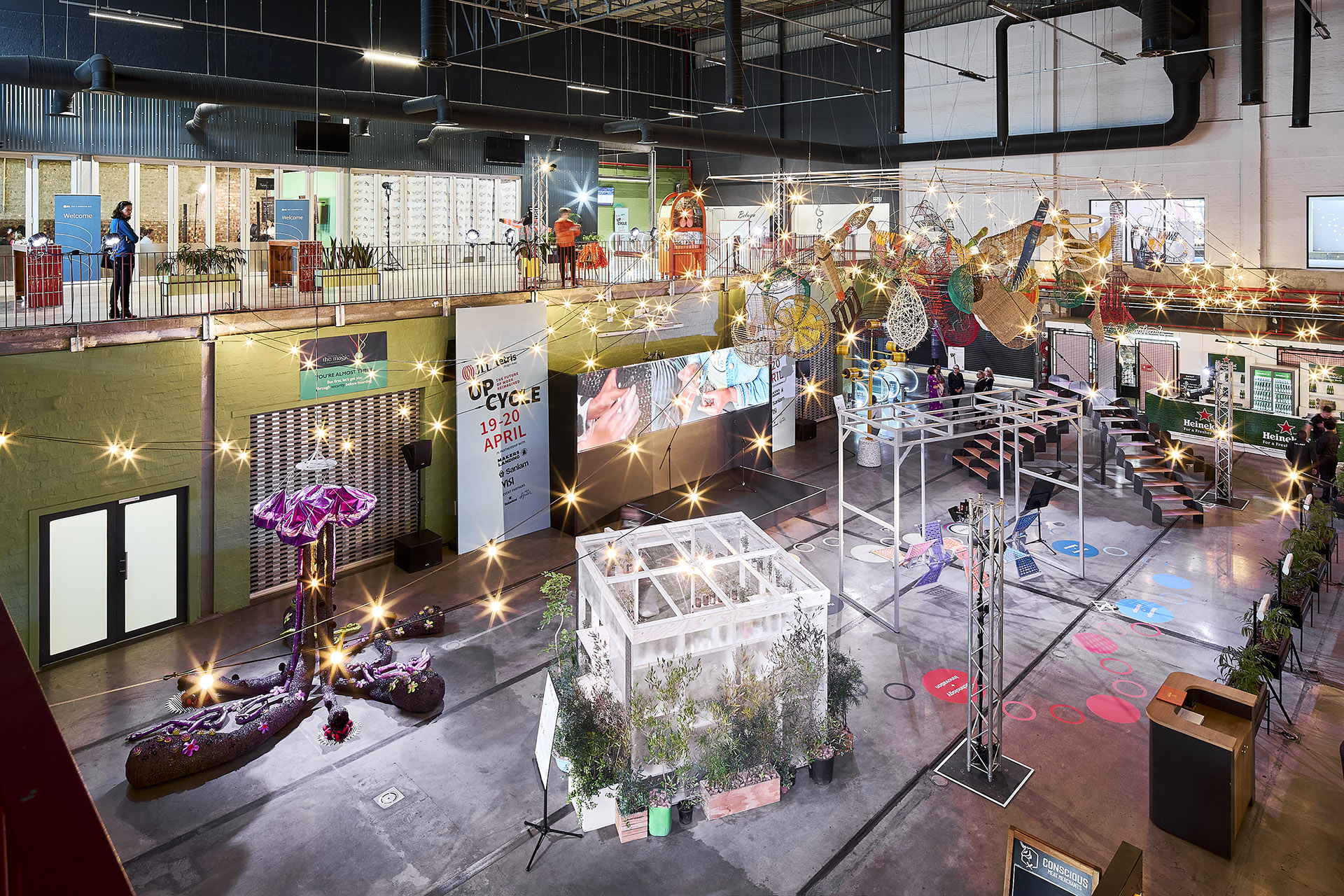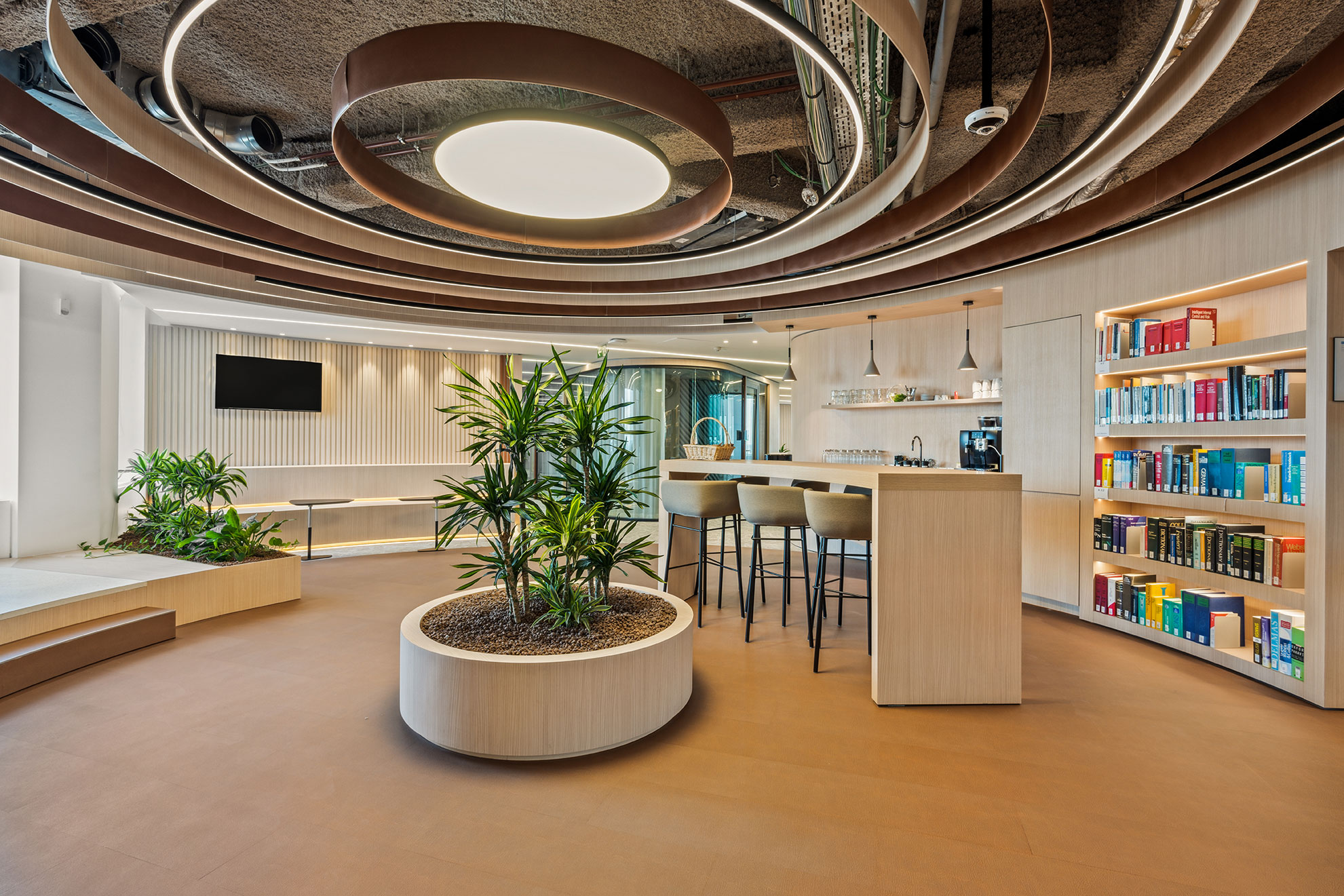Biophilic design has been on the radar as a trend for the past few years but, in a post-pandemic world, we believe the need and desire for more sustainable spaces will increase. Companies had to press pause on their ESG goals to ensure that their office was a safe, clean, COVID-free environment and reassure people coming back into the office. Now that this has been addressed, it’s time to look at restarting sustainability projects, especially if you want to entice people back to the office. Gone are the days of cramming as many workstations in as possible – people’s comfort and satisfaction will now drive design ideas and decisions.
The pandemic changed our relationship with nature
Not only did the pandemic change the way we work with a new, hybrid and flexible approach that puts people and their lives first, but it also changed our relationship with nature. “For many, lockdowns meant that the most people could do is go out for a walk and be out in nature. It helped us all reconnect with and appreciate nature, so the desire for more natural, biophilic designs is no surprise,” says Anna Rebecka, Senior Creative Architect at Tétris Poland.
Not only are employees asking for a more relaxed, friendly and homely atmosphere, but companies are recognising how creating a more informal environment can boost their staff’s mood and productivity. “The more companies focus on wellbeing, the more they’ll get out of their employees. And what has a great, positive impact on wellbeing? Plants and other green features!” Rebecka believes that designs inspired by our natural surroundings are the way forward. “Let natural light take centre stage, install locally-sourced furniture and finishes from local brands and artists to ensure that your design is not just green, but sustainable as a whole.”
Good vibes for good lives
Plants and green areas can lower stress levels, restore emotional balance, increase creativity, productivity and wellbeing, and even reduce the amount of time people take off sick. For example, InteriorWorks saw a dramatic decrease in the amount of people taking time off sick after we revamped their office – sick leave dropped by 59%.
Not only do plants and green spaces look beautiful and improve mood and mental health, but they can provide practical solutions to problems we all have. In a post-pandemic world, a row of plants can create natural partitions so you can do away with cold, impersonal glass ones. They can also improve acoustics, purify air and increase humidity. “Plants can add significant comfort while looking great. Adding natural elements like these can even encourage people to return to the office, particularly if they live in city centres that don’t necessarily allow them to have their own garden. Greenery is now a core part of interior design.”
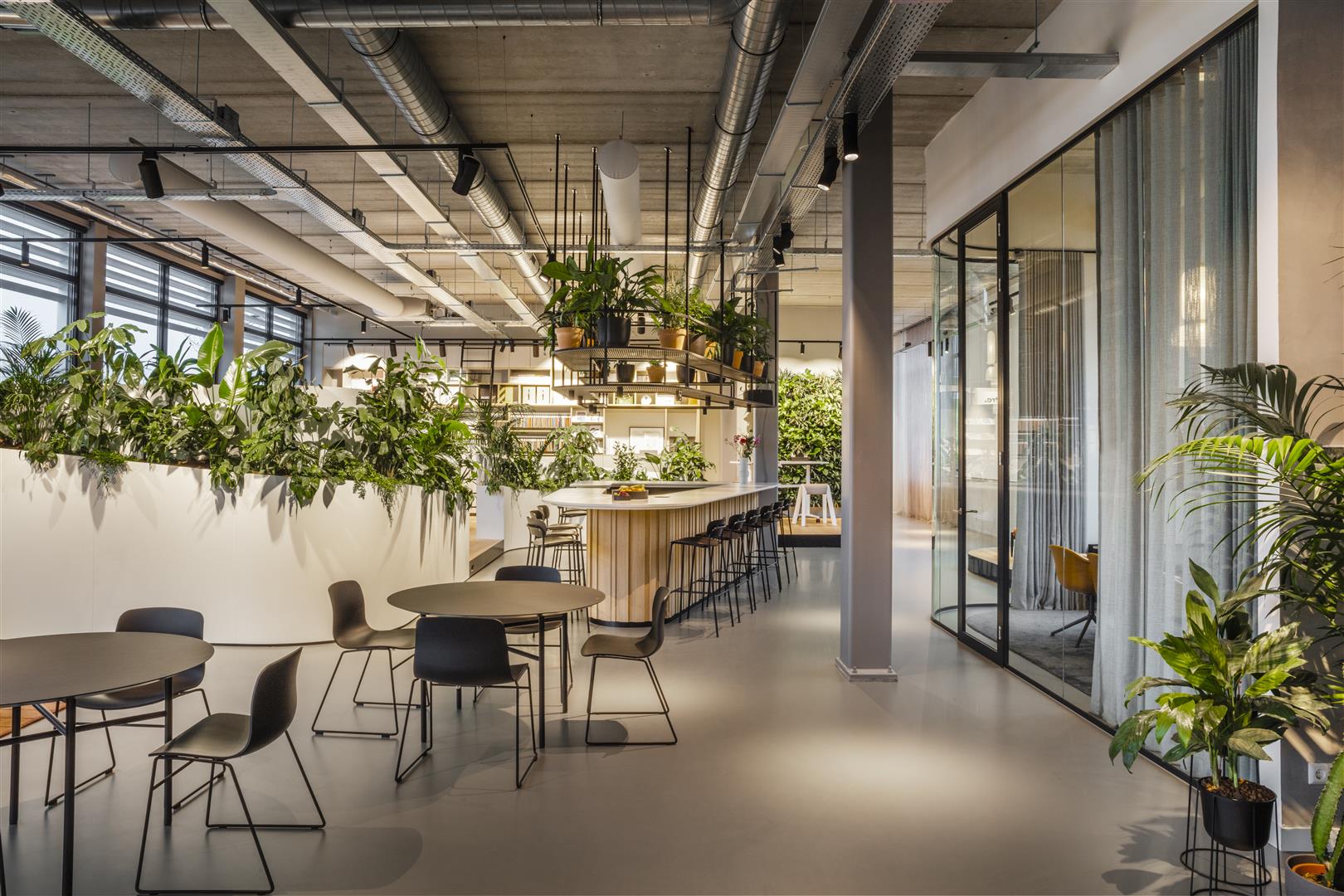
Choose your plants wisely
While companies agree that they need to include green spaces and increase sustainability, confusion arises when trying to incorporate them within a workspace, as well as working out which plants are most appropriate for an indoor space.
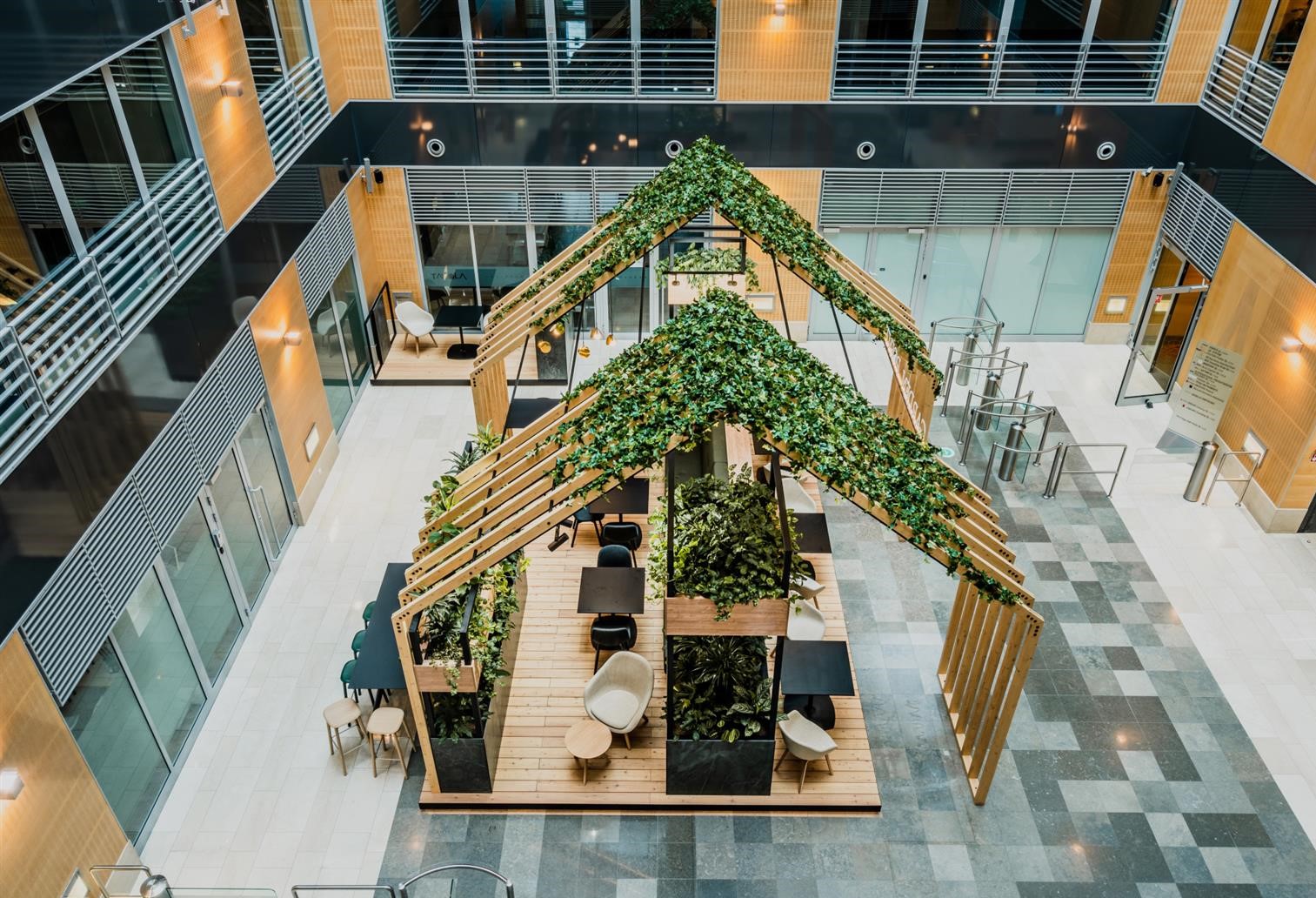
“We aim to create green jungles within the concrete jungles we refer to as cities,” comments Rebecka. One of the easiest ways to introduce plants in your office is by starting at the focal point where both employees and guests will always congregate – the reception. When we were tasked with delivering the fit out for Marynarska Point 2’s building in Warsaw, we took inspiration from the ‘cottage core’ trend, building a mini cottage in the lobby which showcases plants as well as tables or sofas, so people feel welcome to linger and mingle in the space.”
“The flow of the area almost forces people to stop, take time out, appreciate the plants and breathe! “We wanted to make the most of this space, making it as welcoming as possible so people want to spend time there. We even put a green wall behind the reception desk so people feel surrounded by a green oasis.”
Plants were chosen not just according to their natural beauty, but their practical function. “The plants not only look stunning, but they improved the lobby’s acoustics and air humidity.”
In addition to bringing nature inside, we also helped renovate and modernise the building’s external green areas. We increased the amount of biophilia in these outdoor spaces and introduced furniture so people could take their time to relax outside. “We chose plants that would support and diversify local insect populations – especially pollinating ones – while eliminating excess water in the soil.”
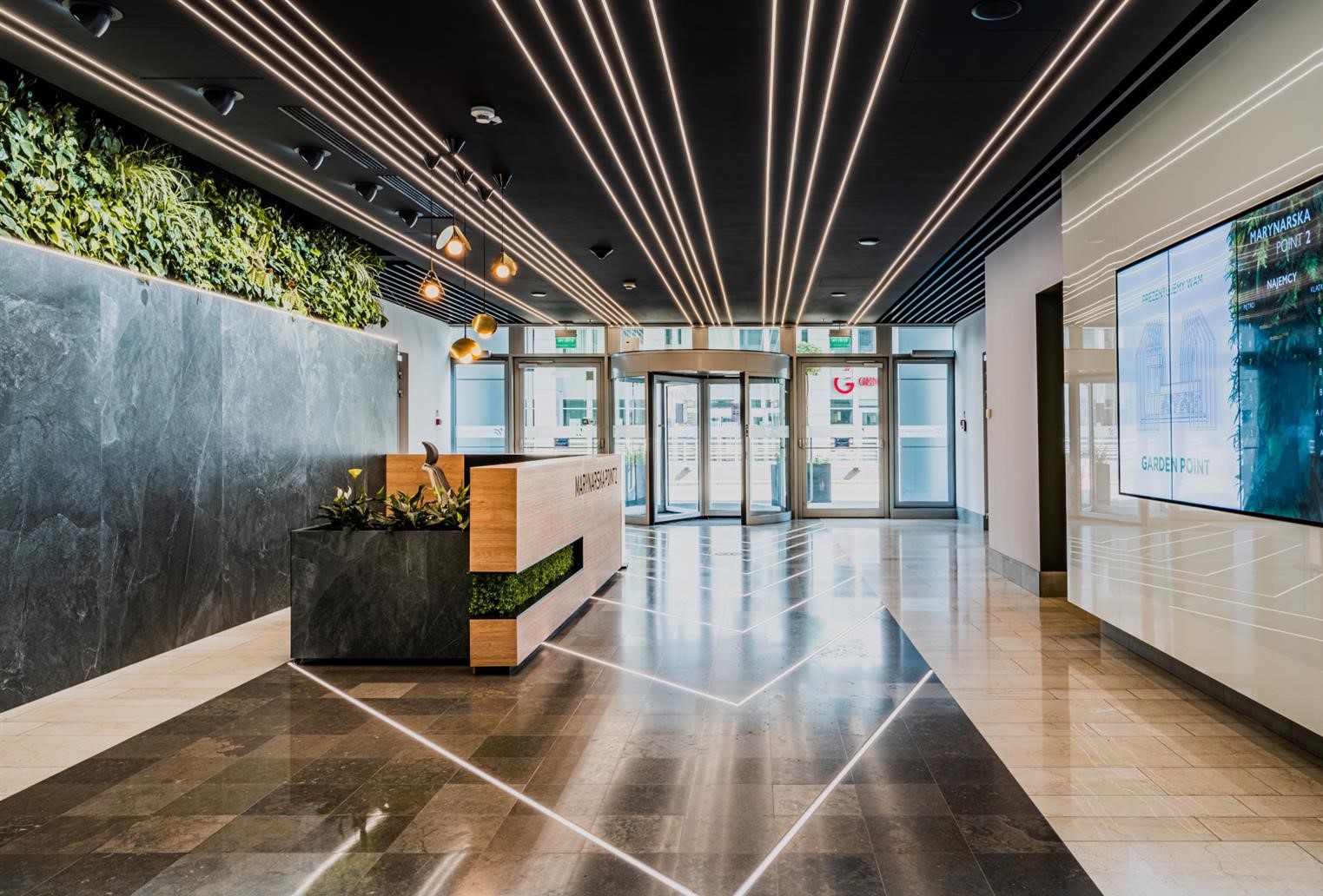
Planting the seeds of inspiration
Green spaces don’t just stop there – you can create green areas regardless of any spatial restrictions you may face. For example, greenhouse crops and gardens are being created on the roofs of buildings, which are increasingly being seen as additional places for employees to relax outdoors.
“Innovative projects implemented by Tétris also include the installation of greenhouses on rooftops and vertical gardens in corporate spaces with lasting social benefits. As previously mentioned, a great example is the InteriorWorks office in Amsterdam. The interior is WELL certified and includes an indoor garden with herbs, which are used to prepare meals for staff,” adds Rebecka.
Green, natural, sustainable spaces are not just a trend – they are a must-have for any company that wants to retain and attract talent as more and more people realise the need for a healthy work/life balance and an office environment that allows them to relax as well as be productive and focus. By investing in green spaces, you can make a tangible difference to your staff’s mood and wellbeing which, as we’ve seen over the past 18 months, is paramount.

Tétris can help make your office more sustainable
